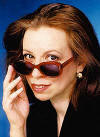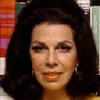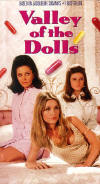
It Happened
in History!
(Go to
It Happened in History Archives)
|
Four years later, Susann published her novel, Valley of the Dolls (1966), about a woman struggling to make it as an actress in Hollywood. It details her life along the way, a roller-coaster life filled with sex, glamour, depression, and infighting. During her struggle, the woman gets wrapped up in an ever escalating addiction to "dolls" (uppers and downers). Jacqueline Susann was born to a loving mother and a philandering portrait-painter father. Often, he would pretend to take his daughter to the movies and drop her off while he rendezvoused with a mistress. Later, after picking his daughter up, he would grill her about the film so that he could discuss it with his wife that evening. In school, Susann was an intelligent if somewhat lackluster student. She scored the highest on her class's IQ test, 140, prompting her mother to predict that she would someday become a good writer. But Susann had other ideas. "Acting is glamour, but writing is hard work, so I'm going to be an actress," she said.
With the support of her new husband, press-agent Irving Mansfield, who was helping to promote his wife professionally, Susann wrote her first play, Lovely Me, which was picked up for production on Broadway. The play was produced by one of the author's ex-lovers. It closed after only 37 performances. In the early Fifties, Susann wrote her first romance/science fiction novel, Yargo. In 1955, she acquired her pet poodle, Josephine, and a contract to be the fashion commentator for Schiffli Lace on an all-night television show called Night Time, New York. She wrote, starred in and produced two live commercials a night. She tried writing a show-biz/drug expose which she was going to call The Pink Dolls, but instead she wrote her first successful book, Every Night, Josephine!, about life with her poodle.
Almost overnight, Jacqueline Susann had become the most popular writer of her generation, the undisputed Queen of Pulp Fiction, whose own life was as exciting and glamorous as anything she wrote about in her best-selling novels. When her next novel, The Love Machine (1969), was published, she had the book's title painted on the side of her chartered plane, and she personally delivered pastries to the truckers and bookstore workers who shipped and shelved her books. Although attacked by serious scholars as a bubble-gum author (author Gore Vidal said of her, "She doesn't write, she types"), Susann nonetheless remains the only writer ever to have three novels in a row hit number one on the New York Times' best-seller list. More than twenty-million copies of Dolls are in print, and the Guinness Book of World Records lists Valley of the Dolls as tied with Gone with the Wind and To Kill a Mockingbird as the best-selling novels by a female author in history.
Susann believed that the wild and free-wheeling generation known as the Sixties would go down in history for three things--Andy Warhol, the Beatles, and Jacqueline Susann, and she may have been right. Jacqueline Susann took a bold leap forward and opened the door for future tell-all celebrity writers, such as Danielle Steel and Jackie Collins. But as the years passed, Susann sensed that her life was
nearing its finale. When she went to the hospital for the last time,
she slipped into a coma for seven weeks. Her last words to her husband
were, "Let's get the hell outa here, doll."
Discover Jacqueline Susann
Indulge
Yourself - Check Out Today's Best-Selling |
- HOME -





